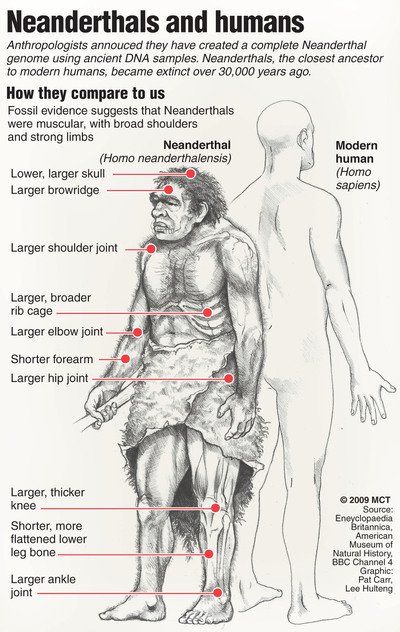
The Neanderthals walked the hills and plains of Europe and Asia for nearly 400,000 years before completely disappearing nearly 40,000 years ago. Modern humans believed that these ancient people had left no genetic traces until scientists were able to reconstruct their DNA. They were shocked to find that many modern Europeans and East Asians have DNA that contains evidence that our ancient ancestors mixed with Neanderthals.
Neanderthals were very similar to Homo Sapiens. They were shorter and heftier and they had significantly larger brains than humans. The short, stocky bodies were well suited to colder environments. They, along with the Denisovans who lived at about the same time, are our closest ancient relatives.
Neanderthals are better understood than any other hominid ancestor. We have found thousands of the artifacts that they’ve left behind and we also have several complete skeletons. Neanderthals were surprisingly skilled at making tools like hand axes and spears from flint. They could make fire, were good hunters, and could communicate with one another using their own version of language. They don’t deserve the reputation of being somewhat dim-witted.
Scientists aren’t quite sure why the Neanderthals disappeared, but it’s likely that modern humans had a hand in it. As Homo Sapiens spread from Africa into Europe and Asia, the Neanderthals had to compete with us for scarce resources and they lost out.




